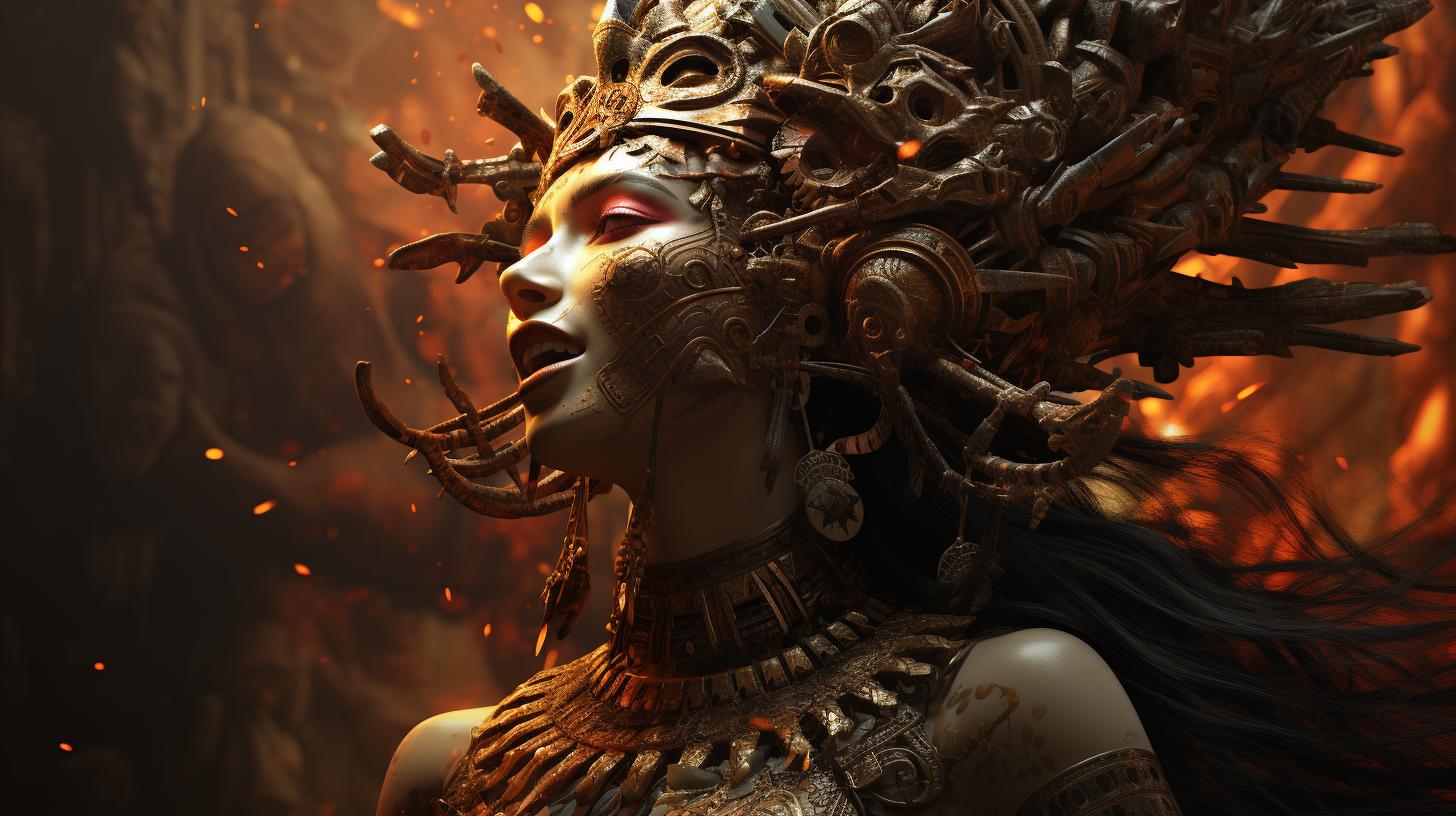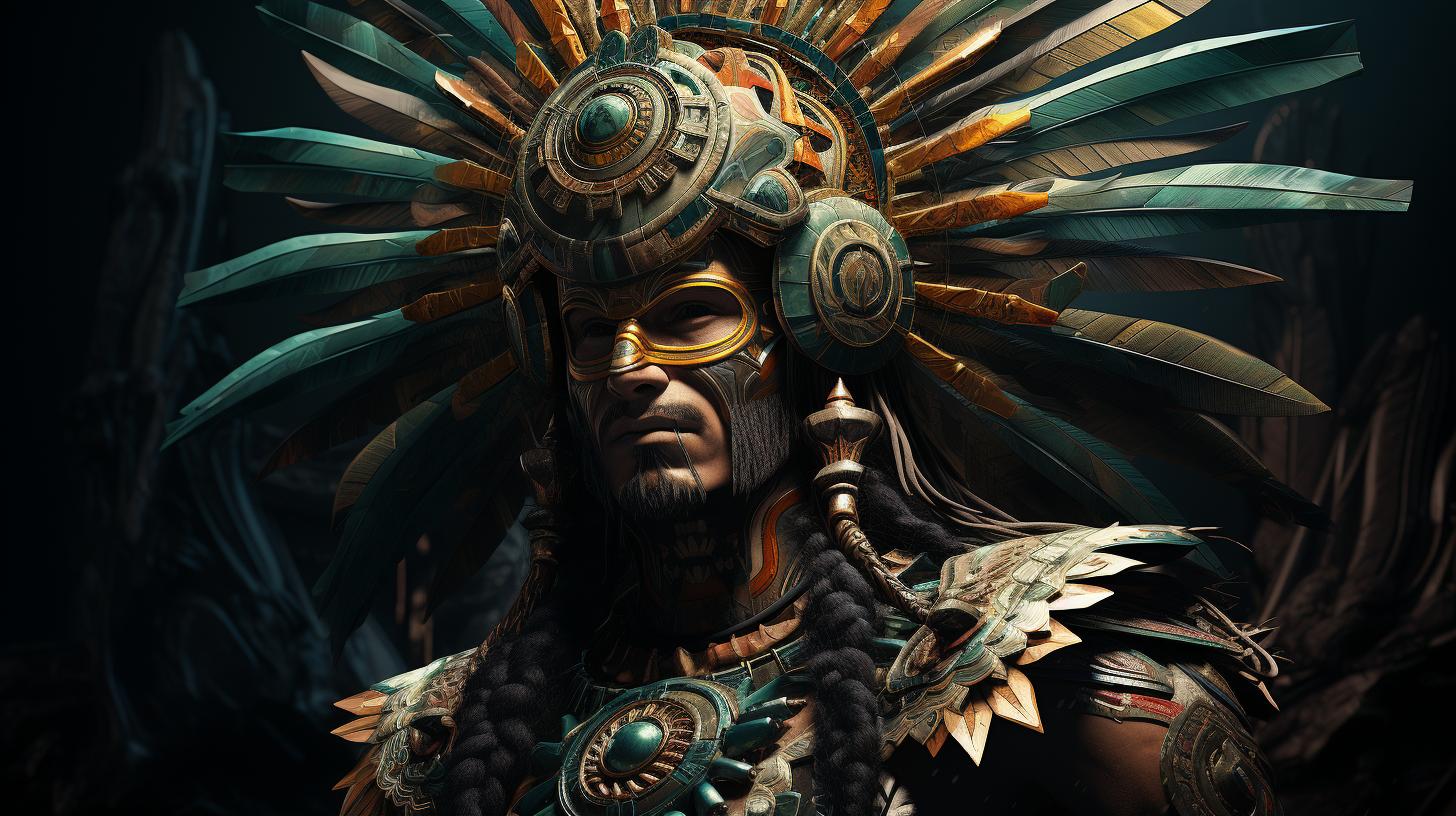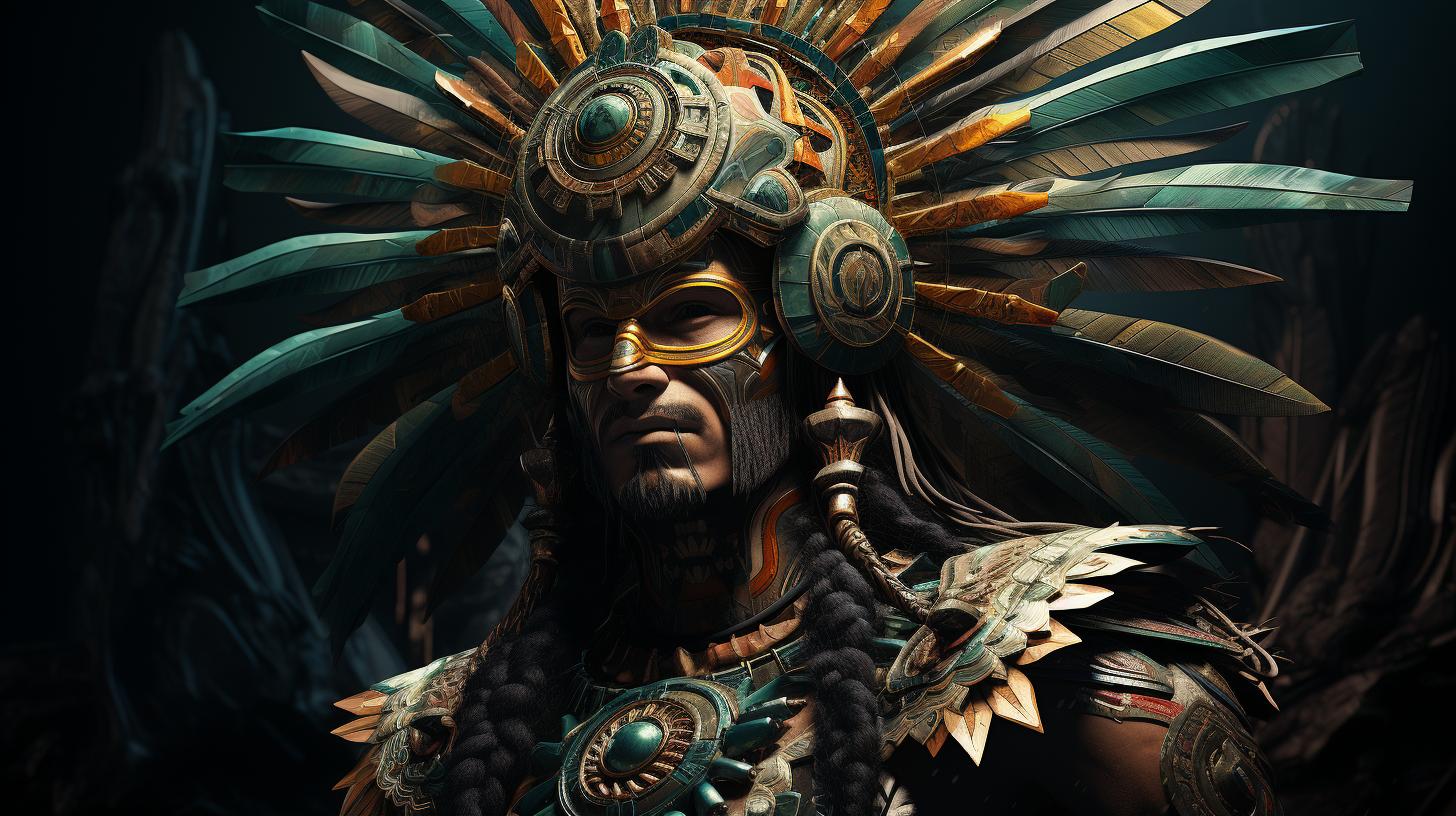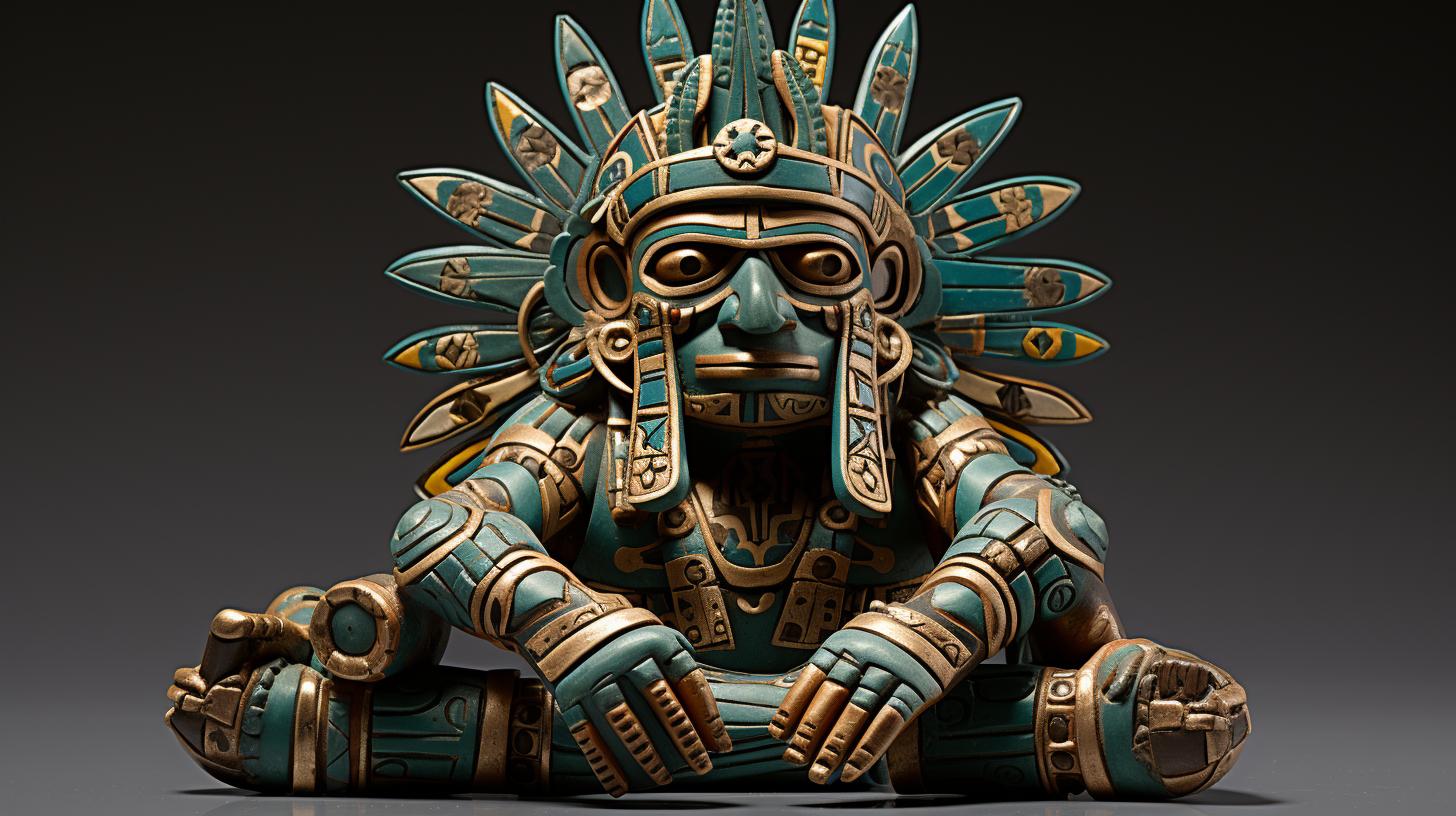Citlalicue: The Powerful Aztec Goddess Unveiled

Citlalicue, the Aztec goddess, holds significant roles in Aztec cosmology. She is revered as the creator of stars and is associated with both the Milky Way and Earth. Additionally, Citlalicue is regarded as the goddess of death and darkness, often linked to the first human pair in Aztec mythology, Nata and Nena.
In the Aztec calendar, Citlalicue is revered as the ‘Lady of the Day’ on the 13th day of the month. Finding visual representations of Citlalicue can be challenging, but some images are available in the Enciclopedia Gráfica del México Antiguo.
The Role of Citlalicue in Aztec Cosmology
Citlalicue, the Aztec goddess, holds significant roles in Aztec cosmology. She is revered as the goddess of creation and stars, embodying the power to bring forth new celestial bodies. This divine association positions her at the forefront of Aztec mythology and underscores her importance in their belief system.
Citlalicue as the Goddess of Creation and Stars
As the goddess of creation, Citlalicue is believed to have a profound influence in bringing forth stars into existence. In the cosmology of the Aztecs, she played a crucial role alongside her husband Citlalatonac in the act of stellar creation.
Their joint efforts shaped the brilliance of the night sky, filling it with countless stars that guided the path of the Aztec people.
The Association of Citlalicue with the Milky Way
Citlalicue’s association with the Milky Way further solidifies her celestial significance.
Just as the Milky Way spans across the night sky, Citlalicue’s essence is intrinsically linked to this celestial phenomenon. The Aztecs saw the Milky Way as a representation of Citlalicue’s presence and connection to both the earthly realm and the heavens.
By embodying the dual aspects of creation and stars, Citlalicue emerges as a pivotal figure in Aztec cosmology. Her divine powers and association with the cosmic forces highlight her integral role in shaping the Aztec perception of the universe.
Citlalicue: Goddess of Death and Darkness
Citlalicue, the Aztec goddess, holds a significant role as the goddess of death and darkness in Aztec mythology. She is closely linked to the first human pair in Aztec cosmology and her mythological connection with Nata and Nena.
Let’s explore the fascinating aspects of Citlalicue’s relationship with the first human pair and the mythological significance it holds.
Citlalicue’s Relationship with the First Human Pair
Citlalicue is believed to have a special connection with the first human pair in Aztec mythology, Nata and Nena. As the goddess of death and darkness, she represents the cycles of life and the inevitable passage into the realm of the dead.
Citlalicue’s presence in the creation of the first human pair signifies her role in shaping the destiny and mortality of humanity.
The Mythological Connection between Citlalicue and Nata-Nena
The mythological connection between Citlalicue and Nata-Nena further emphasizes her importance in Aztec cosmology. Nata and Nena are considered as the first man and woman in Aztec mythology, and Citlalicue’s presence alongside them symbolizes her influence as both a creator and a deity associated with death.
Their interplay in the mythological narrative reflects the intertwined nature of life and death in the Aztec belief system.
The Veneration of Citlalicue in the Aztec Calendar
Within the rich tapestry of Aztec mythology, Citlalicue holds a special place as a revered deity. Let us explore the significance of Citlalicue in the Aztec calendar and the rituals associated with her veneration.
Citlalicue as the ‘Lady of the Day’
Citlalicue is honored as the ‘Lady of the Day’ in the Aztec calendar, particularly on the 13th day of the month. This designation highlights her elevated status and the significance attributed to her presence.
Devotees make offerings and pay homage to Citlalicue during these auspicious days, seeking her power and blessings.
The Significance of the 13th Day
The 13th day of the month carries immense importance in Aztec cosmology. It symbolizes a potent energy that aligns with the divine forces and the cycles of creation. On this day, believers engage in ceremonies and rituals dedicated to Citlalicue, acknowledging her role in cosmic harmony and the divine order.
In the Aztec mindset, the 13th day serves as a gateway to spiritual realms, allowing individuals to connect with celestial forces and seek guidance from Citlalicue.
During these rituals, participants express their gratitude and seek favor from Citlalicue, offering prayers, incense, and symbolic items as tokens of devotion.
The faithful believe that by venerating Citlalicue on the 13th day, they can tap into her power, ensuring protection, fertility, and abundant blessings in their lives.
By understanding the importance of the 13th day and participating in the veneration of Citlalicue, Aztec devotees strive to forge a deeper connection with the divine and honor the timeless traditions passed down through generations.
Visual Representations of Citlalicue
In exploring the visual representations of Citlalicue, it is important to note that finding depictions of this Aztec goddess can be quite challenging. Although Citlalicue holds significant importance in Aztec mythology, there are limited visual references available.
Challenges in Finding Visual Depictions
One of the main difficulties in locating visual representations of Citlalicue lies in the scarcity of detailed information about her. As a lesser-known deity compared to other Aztec gods and goddesses, there is a lack of specific iconography associated with Citlalicue.
This scarcity makes it challenging to find accurate and comprehensive visual depictions of her.
Available Images in the Enciclopedia Gráfica del México Antiguo
However, there are some sources that provide images of Citlalicue, such as the Enciclopedia Gráfica del México Antiguo: Los Dioses Supremos by Salvador Mateos Higuera. This compilation features illustrations based on the Códices Borbónico and Aubin, which offer valuable insights into the visual representation of Citlalicue.
While these images may not provide an abundance of depictions, they serve as reliable references for those seeking visual representations of the Aztec goddess for various purposes, such as artwork or tattoos.
Although limited in quantity, these available images in the Enciclopedia Gráfica del México Antiguo allow us to gain some visual understanding of Citlalicue’s representation within the Aztec pantheon.
.




















